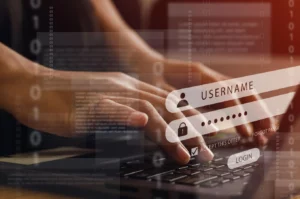
Are You Safe? 15 Ways To Prevent A Hacker Attack Today
As we navigate the digital landscape, it is essential to prioritize your online security. In today’s world, hackers can strike at any moment, and the consequences of a successful attack can be devastating. It may seem obvious, but practicing safe online behavior is crucial: avoid phishing scams, suspicious links, unsafe websites, and unknown email attachments. Moreover, be cautious with messages from friends or relatives, as they may unknowingly send you malicious links.
To ensure optimal security, I recommend the following 15 essential tips:
1. Reset all passwords for all online accounts immediately, using strong and unique passwords that are changed every few months. Ensure each account has a distinct password to limit exposure in case of a breach.
2. Activate Multi-Factor Authentication (MFA) on all accounts where possible.
3. Create separate email accounts for different purposes, such as one for important accounts like banking and another for less critical activities like entertainment or subscriptions.
4. Search for exposed personal information by Googling yourself, checking data breach sites like Spokeo, Whitepages, MyLife, and Have I Been Pwned, using tools like Norton’s Dark Web Monitoring or Experian’s services to identify your data on the dark web, and reviewing online discussions or forums for exposed details such as your email or location.
5. Regularly review your credit reports for signs of fraud or unauthorized activity.
6. Keep software and devices updated by regularly checking for outdated apps and operating systems, installing updates promptly, and configuring them to update automatically where supported.
7. Use Lockdown Mode on supported devices to restrict functionality during potential threats.
8. Close inactive online accounts and uninstall unused apps.
9. Limit app permissions to only what is necessary for sensitive data like location. Utilize trusted antivirus solutions to safeguard your devices from malware.
10. Review and adjust privacy and security settings across all accounts, ensuring you are aware of who can see your posts, profile details, and tagged content on social networks.
11. Set up alerts for account logins and transactions to stay informed about any suspicious activity.
12. On social media platforms, restrict who can view your posts, profile information, and tagged content.
13. Avoid oversharing on social media and use filters to minimize phishing attempts and spam by specifying criteria such as keywords, sender addresses, or attachments and choosing actions like automatically deleting or sending them to spam in Gmail.
14. Secure your home network by setting a strong, unique Wi-Fi password, enabling WPA3 encryption, and disabling remote management.
15. Use external drives or cloud services to back up important files and automate backups whenever possible.
In conclusion, security may not always be convenient, but it is a small price to pay for the devastating consequences of losing your identity, money, or something more valuable.
Source: www.forbes.com


